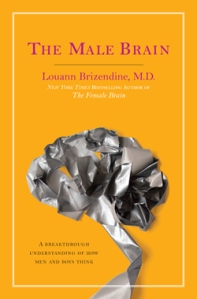 A few years ago I read Louann Brizendine’s book, “The Female Brain”, and marveled at her ability to take weak correlations and turn them into impressively scientific-sounding “facts.”
A few years ago I read Louann Brizendine’s book, “The Female Brain”, and marveled at her ability to take weak correlations and turn them into impressively scientific-sounding “facts.”
This really is a talent, I think, though not one that has earned her many fans in the science community. That Brizendine is a trained psychiatrist, and a member of the American Board of Psychiatry and Neurology, has not helped her credibility in science circles—in fact, many feel it only makes her more culpable, since she really ought to know better.
What I think she knows, however, is that popular science books don’t have to be evidence-based to become best sellers, and she’s no doubt correct. Her just-released book, “The Male Brain”, will demonstrate that marketplace truism once again, and once again she is raising the ire of scientists.
A few examples will better illustrate why this tension exists. Brizendine likes to say that men and women are very much alike, but different in a few crucial ways. Fair enough. How are we different?
For one, she claims the “I feel what you feel part of the brain–mirror-neuron system–is larger and more active in the female brain. So women can naturally get in sync with others’ emotions by reading facial expressions, interpreting tone of voice and other nonverbal emotional cues.”
What’s interesting is that the “mirror-neuron system” at the core of her claim may or may not be a “system” at all; in fact, whether mirror neurons even exist is still a point of neuroscientific contention. At the very least, how these neurons work is debatable and there’s anything but widespread agreement about what they do. But Brizendine makes it sound as if the matter is settled and we can confidently draw sweeping conclusions.
But take another look at her statement. Is the conclusion she’s reaching a paradigm-breaking discovery? Not at all. It’s just a regurgitation of the same stereotype we’ve heard for years, that women are more empathetic, more in sync with emotions and better communicators. Only now, according to Brizendine, we have a grandiose scientific underpinning for believing it.
Here’s another claim: “Perhaps the biggest difference between the male and female brain is that men have a sexual pursuit area that is 2.5 times larger than the one in the female brain.” This statement begs the question, where exactly is this “pursuit area”? The reader shouldn’t expect an answer—at least not one with scientific validity—because in all likelihood no such “area” exists. At minimum we should be asking how this skirt-chasing control center was identified.


 David DiSalvo is a science, technology and culture writer whose work appears in Scientific American Mind, Psychology Today and a variety of other places.
Follow Neuronarrative on
David DiSalvo is a science, technology and culture writer whose work appears in Scientific American Mind, Psychology Today and a variety of other places.
Follow Neuronarrative on 
